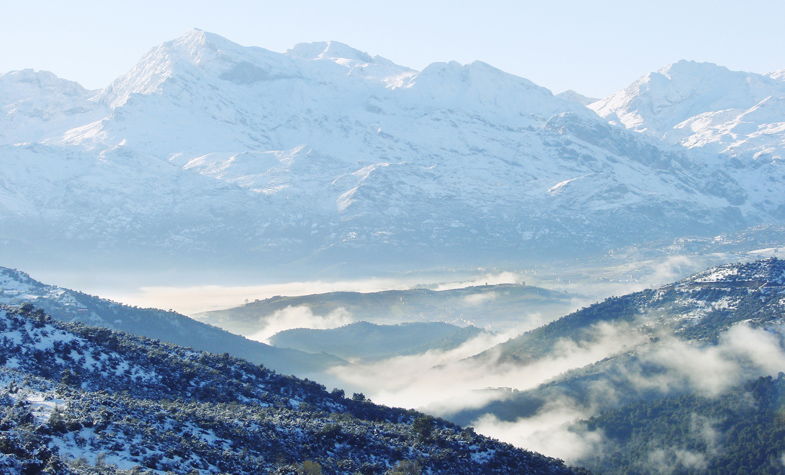National Park Djurdjuran is located north east of Algeria in a very uneven between the towns of Tizi-Ouzou and Bouira mountainous region. Covering an area of 18 500 ha park is a snow-capped peaks, winter rivers and silent forests, gorges and chasms very important, valleys, lakes and highlands.
The park has a climate both continental and médittéranéen from the south which gives it a rich diversity of flora and fauna.
The flora of the national park Djurdjuran is an invaluable resource with a variety of no less than 600 species include including cork oak, holm oak, the zeen oak, Atlas cedar, maple leaves obtuse the rustic maple, maple Montpellier, Aleppo pine, Aleppo pine.
Wildlife is also important and varied with the macaque, we can also meet the booted eagle, wild boar, striped hyena, falcons, nightingales, centered, partridge heron.
Known as a tourist site National interest in skiing, hiking, caving, discovering, Djurdjuran has great potential in terms of tourism development, and the focus is on the promotion of rural tourism. Both resorts south of Tikjda and Tala-Guilef welcome each year more than 500,000 visitors.
The park has a climate both continental and médittéranéen from the south which gives it a rich diversity of flora and fauna.
The flora of the national park Djurdjuran is an invaluable resource with a variety of no less than 600 species include including cork oak, holm oak, the zeen oak, Atlas cedar, maple leaves obtuse the rustic maple, maple Montpellier, Aleppo pine, Aleppo pine.
Wildlife is also important and varied with the macaque, we can also meet the booted eagle, wild boar, striped hyena, falcons, nightingales, centered, partridge heron.
Known as a tourist site National interest in skiing, hiking, caving, discovering, Djurdjuran has great potential in terms of tourism development, and the focus is on the promotion of rural tourism. Both resorts south of Tikjda and Tala-Guilef welcome each year more than 500,000 visitors.

No comments:
Post a Comment